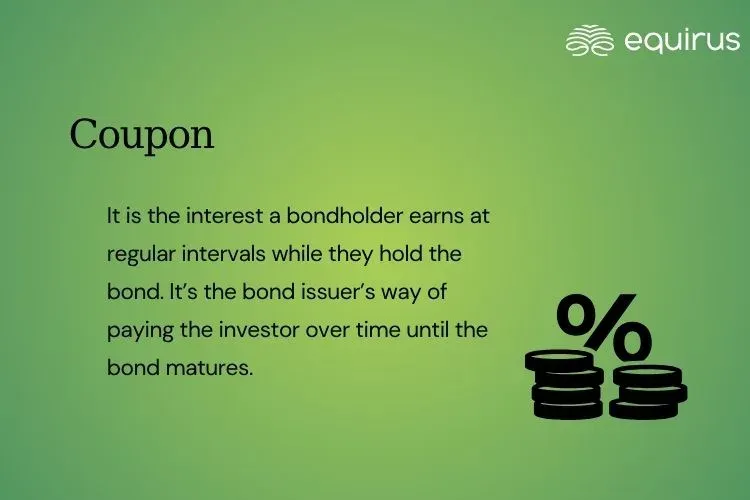Coupon

Key Highlights
-
It is the interest a bondholder earns at regular intervals while they hold the bond.
-
Types of coupons includes fixed-rate, floating-rate, zero-coupon bond and step-up coupon.
What is Coupon?
It is the interest a bondholder earns at regular intervals while they hold the bond. It’s the bond issuer’s way of paying the investor over time until the bond matures. Historically tied to detachable coupons on physical bond certificates, the term now describes interest payments for modern, dematerialized bonds.
Key Features
-
Fixed vs. Floating: Fixed coupons offer a constant interest rate throughout the bond’s life, while floating coupons adjust based on benchmarks like LIBOR or SOFR.
-
Payment Frequency: Typically paid semi-annually or annually, though quarterly or monthly payments exist.
-
Coupon Rate: The yearly interest amount, shown as a percentage of the bond’s original value (also called the face or par value)
-
Coupon Payment: The cash amount received by the bondholder. For a $1,000 bond with a 5% coupon paid semi-annually, each payment is $25 ($50/2).
Types of Coupons
-
Fixed-Rate Coupon: It offers a consistent interest rate, providing stable and predictable returns over time.
-
Floating-Rate Coupon: Adjusts periodically based on a benchmark rate plus a spread. Example: LIBOR + 1%; if LIBOR is 2%, the coupon rate is 3%.
-
Zero-Coupon Bond: Pays no regular interest; sold at a discount and matures at face value, with returns from capital appreciation. Example: A $1,000 bond sold for $900, yielding a $100 gain at maturity.
-
Step-Up Coupon: Increases at set intervals. Example: A bond paying 2% for 2 years, then 3% for the next 3 years.
Significance of Coupon
-
Income Stream: Provides regular, predictable income, appealing to income-focused investors.
-
Yield Calculation: The coupon rate is critical for determining a bond’s yield (e.g., current yield, yield to maturity, or yield to call).
-
Bond Valuation: Coupon payments are discounted to calculate a bond’s price; higher coupons typically increase bond prices.
-
Risk Assessment: Consistent coupon payments signal the issuer’s financial stability, while missed payments may indicate distress.
